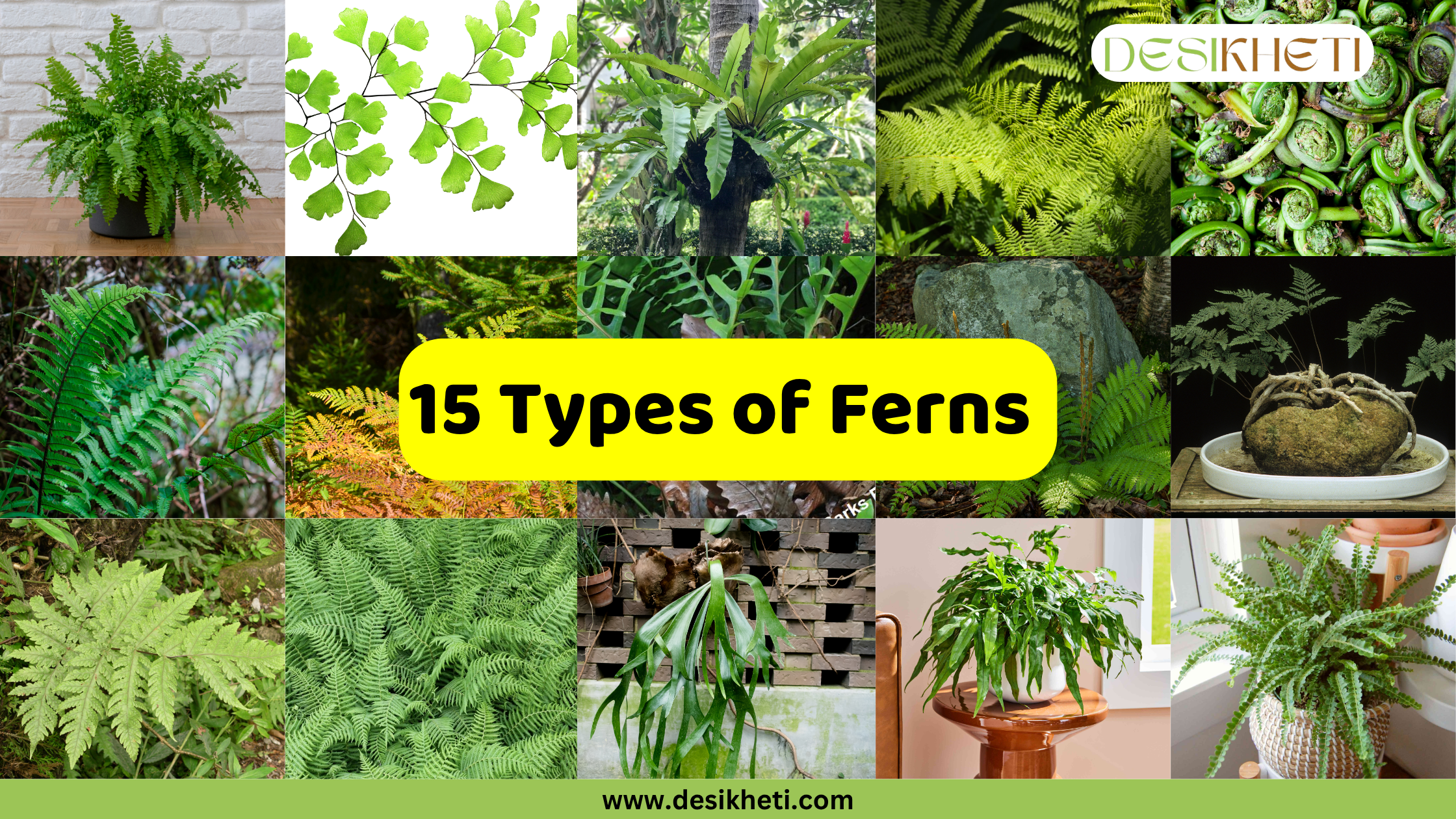Table of Contents
Introduction
Ferns are timeless plants that bring lush greenery and elegance to both indoor and outdoor spaces. Known for their delicate fronds and diverse shapes, ferns thrive in shady, humid environments and add a refreshing, natural feel to any garden, balcony, or room.
Whether you’re looking for a dramatic, tall fern like the Cinnamon Fern or a compact, charming option like the Lemon Button Fern, there’s a fern variety suited for every space and style.
In this blog, we explore 15 popular and easy-to-care-for fern varieties, their ideal growing conditions, and the many benefits they offer to plant lovers and gardeners alike.
15 Best Fern Varieties
Boston Fern
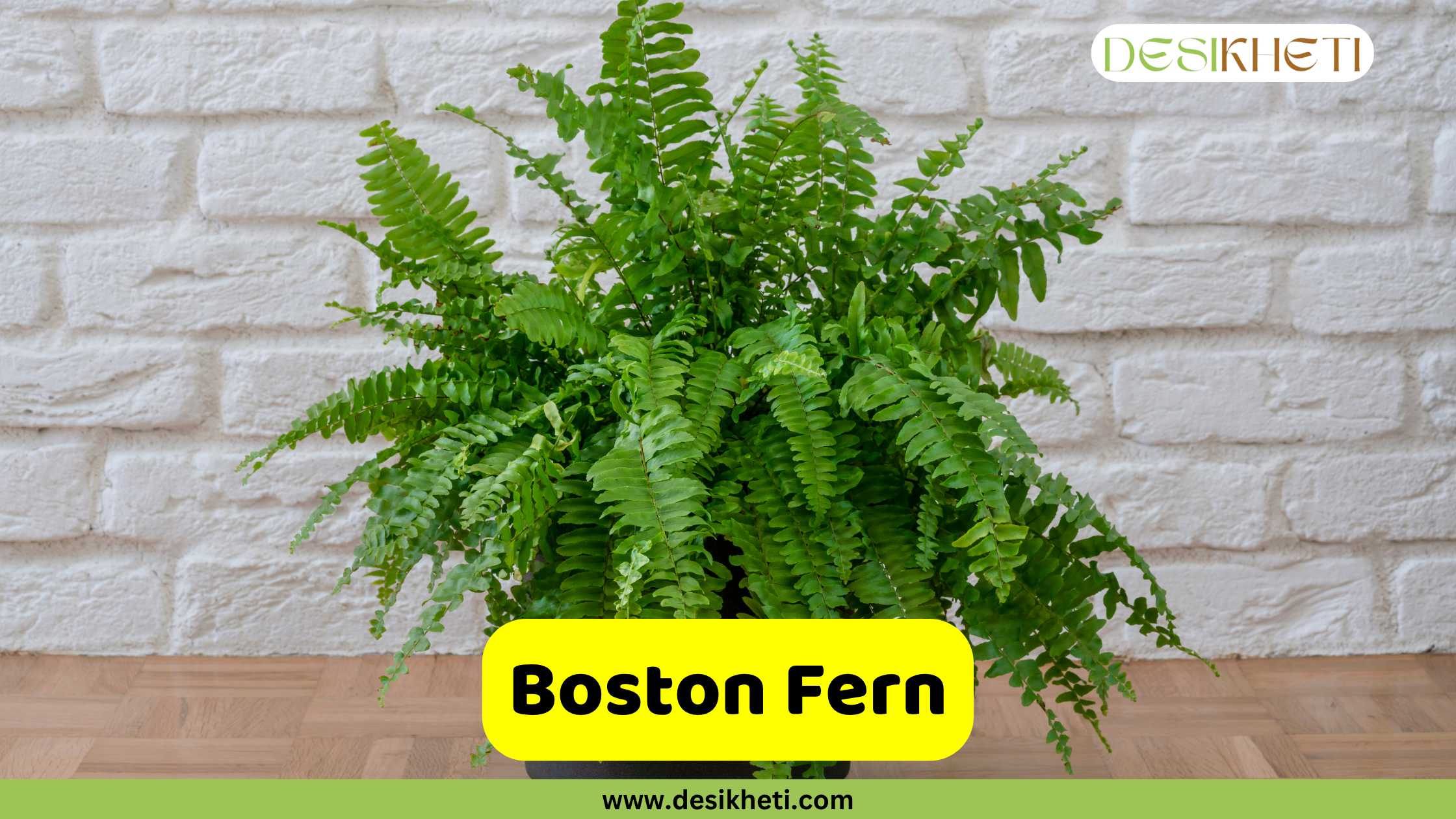
Scientific Name: Nephrolepis exaltata
Boston Fern is admired for its long, arching fronds that can grow up to 2–3 feet. Its small, finely serrated leaflets form a bushy, fountain-like shape with a soft, feathery texture, giving a lush tropical look. It prefers bright, indirect sunlight and thrives in high-humidity environments. The plant grows best in rich, well-draining, loamy soil and requires consistently moist soil without becoming waterlogged.
Uses and Benefits:
- Acts as an effective indoor air purifier.
- Ideal for hanging baskets or tabletop pots.
Maidenhair Fern
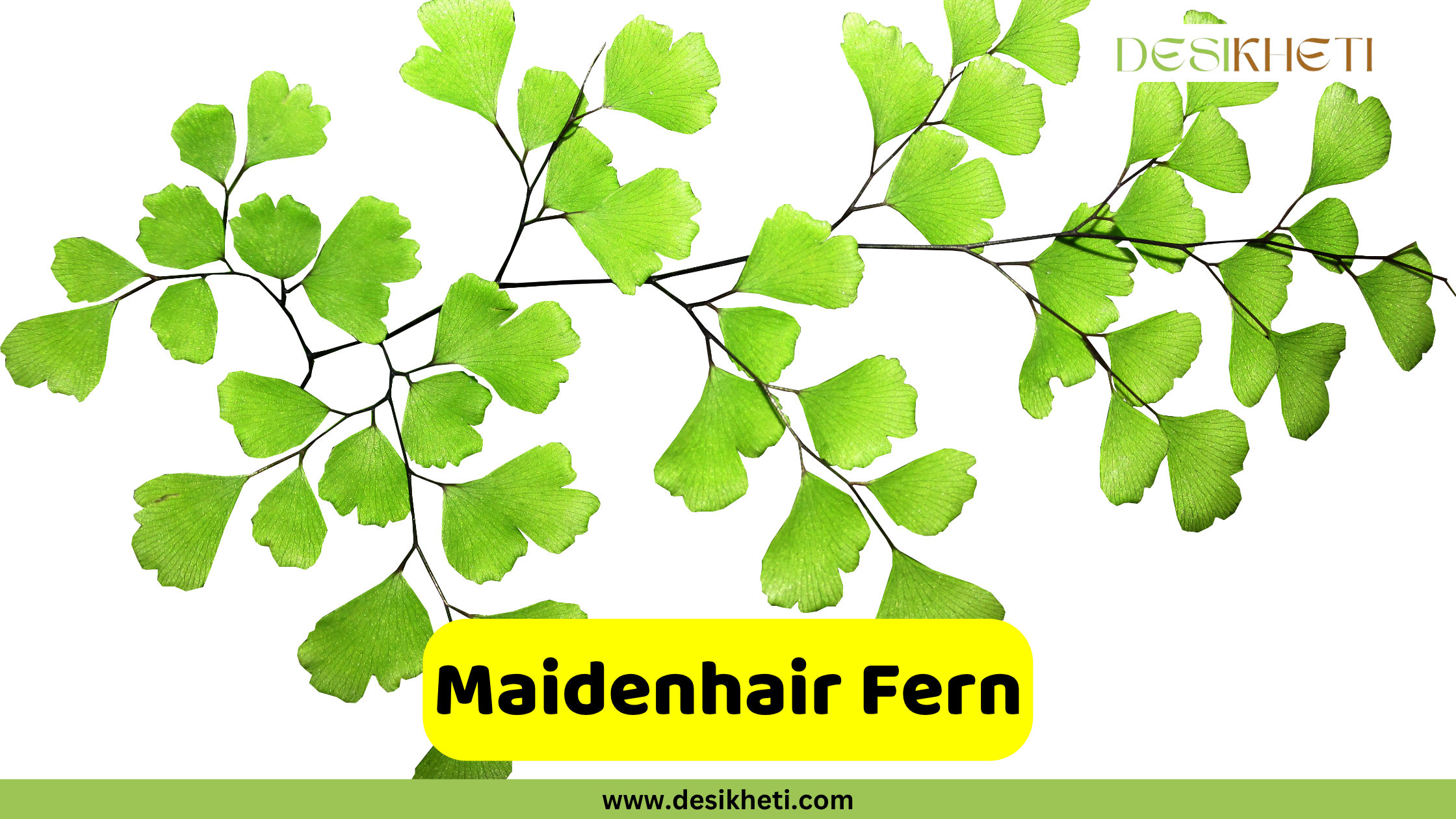
Scientific Name: Adiantum spp.
Maidenhair Fern features delicate, fan-shaped leaflets on thin, black, wiry stems, creating an airy, lace-like appearance. It grows about 1–2 feet tall and prefers indirect, filtered light. This fern thrives in cooler temperatures and requires very high humidity. It grows best in fertile, well-draining soil.
Uses and Benefits:
- Adds elegance to indoor spaces.
- Suitable for terrariums due to its high humidity needs.
Bird’s Nest Fern
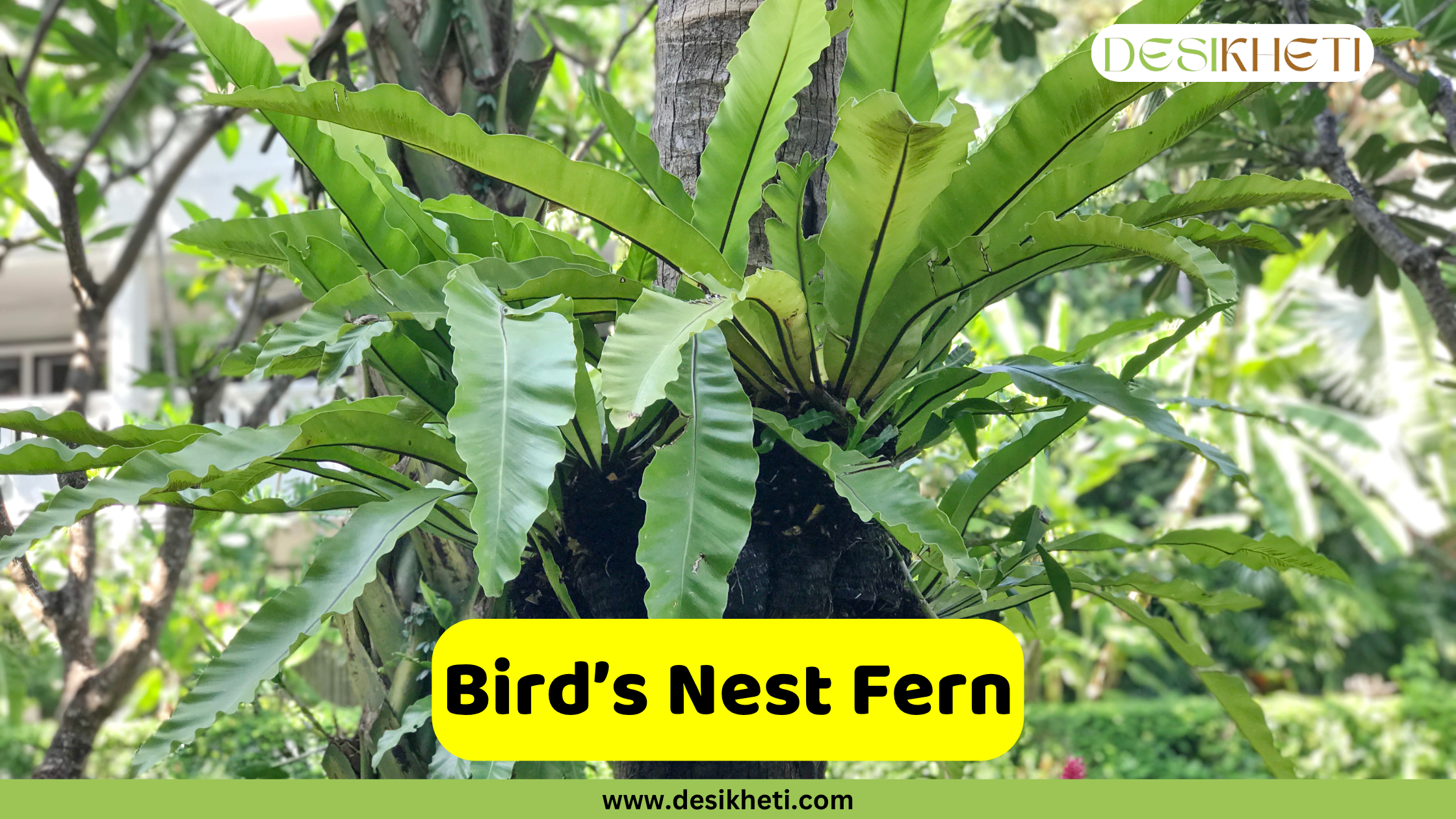
Scientific Name: Asplenium nidus
Bird’s Nest Fern has broad, wavy fronds that emerge from a central rosette resembling a bird’s nest. The leaves are glossy, bright green with a distinctive black midrib, growing up to 2–3 feet wide and tall.
It thrives in medium to low indirect light and prefers high humidity, making it a good choice for humid indoor spots like kitchens and bathrooms. The fern prefers loose, well-draining soil rich in organic matter.
Uses and Benefits:
- Great for adding tropical appeal indoors.
- Easy to maintain in low-light conditions.
- Improves indoor air quality.
Lady Fern
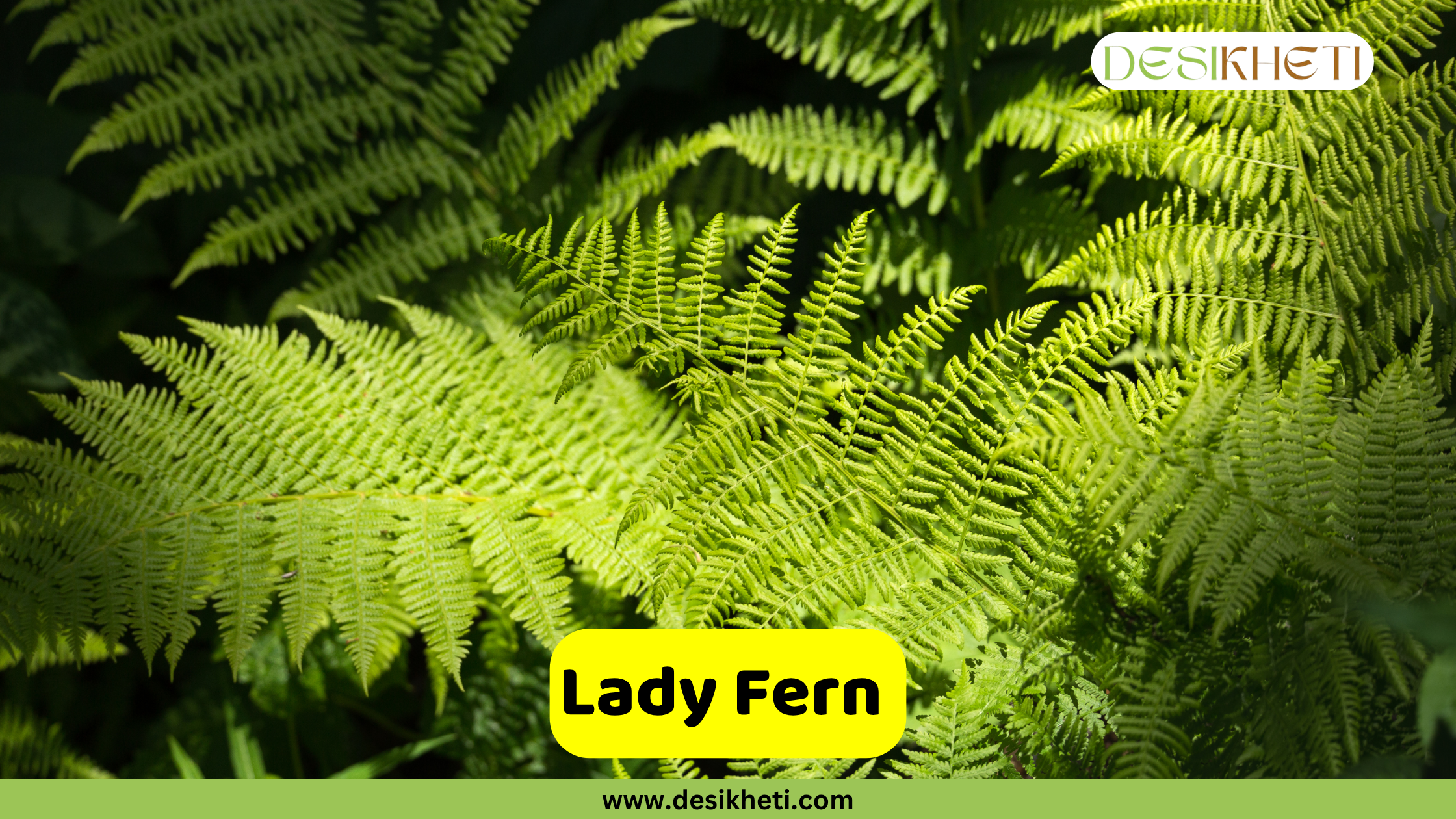
Scientific Name: Athyrium filix-femina
Lady Fern displays finely divided, light green fronds arranged in a delicate, arching, lacy pattern. It can grow 2–3 feet tall and wide, offering a soft woodland aesthetic. This fern prefers partial to full shade and moist, fertile soil enriched with organic compost. It tolerates lower humidity compared to tropical ferns and grows well in cooler climates.
Uses and Benefits:
- Adds a soft, natural woodland feel to gardens and homes.
- Low-maintenance and an attractive companion plant for perennials.
Vegetable Fern

Scientific Name: Diplazium esculentum
Vegetable Fern, commonly known as Linguda in parts of Northeast India, is a fast-growing edible fern found in tropical and subtropical regions. It features long, arching green fronds with deeply lobed, pinnate leaflets, giving it a graceful, lush appearance.
This fern prefers partial to full shade and thrives in warm, humid conditions with consistent moisture. It grows well in loamy, rich, well-draining soil, especially in monsoon-drenched or streamside environments.
Uses and Benefits:
- Edible young fronds are used in traditional Indian and Southeast Asian cuisines.
- Rich in nutrients like iron, fiber, and antioxidants.
- Supports soil erosion control in wet or hilly terrain.
- Adds lush greenery to moist garden areas or wild landscapes.
Swamp Fern
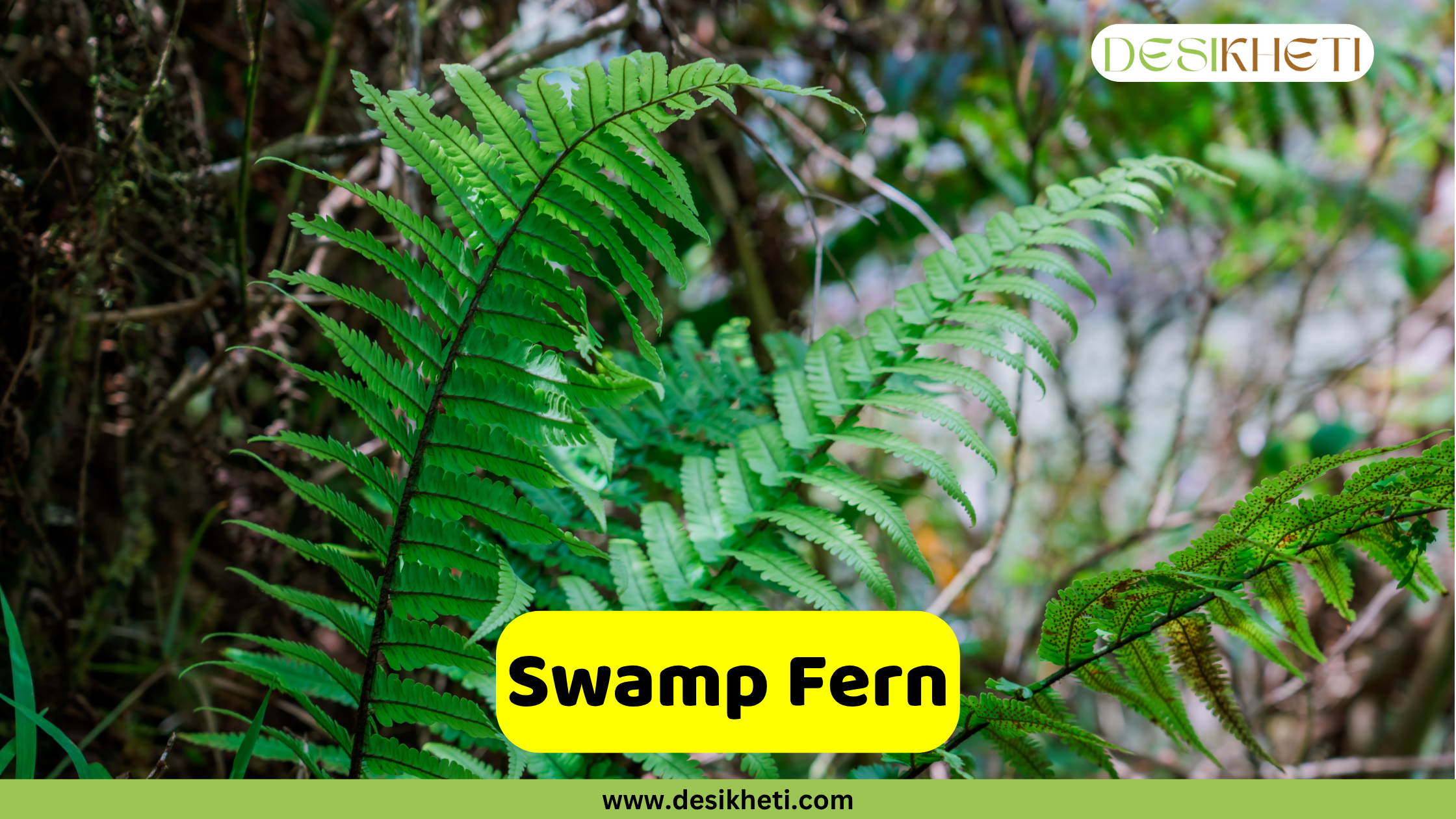
Scientific Name: Cyclosorus interruptus
Swamp Fern is a semi-aquatic fern commonly found in marshy areas, wetlands, and rice fields. It features bright green, lance-shaped fronds with deeply divided pinnae arranged symmetrically. The fronds can grow up to 1–2 feet long, creating a soft, lush appearance.
It thrives in wet, muddy, or poorly drained soils and prefers partial to full shade. This fern naturally grows in tropical and subtropical climates and is ideal for water gardens or rain-fed zones.
Uses and Benefits:
- Adds dense greenery to pond edges and marsh gardens.
- Low-maintenance fern for tropical-style landscaping.
Autumn Fern

Scientific Name: Dryopteris erythrosora
Autumn Fern is prized for its coppery-red young fronds that mature into deep green, creating seasonal color interest. Its arching, lance-shaped fronds grow 1.5 to 2 feet tall and wide. This semi-evergreen fern prefers partial to full shade with moist, well-drained soil rich in organic matter. It grows well in cool, humid climates.
Uses and Benefits:
- Provides attractive seasonal foliage color changes.
- Perfect for shaded garden beds and woodland areas.
Oakleaf Fern
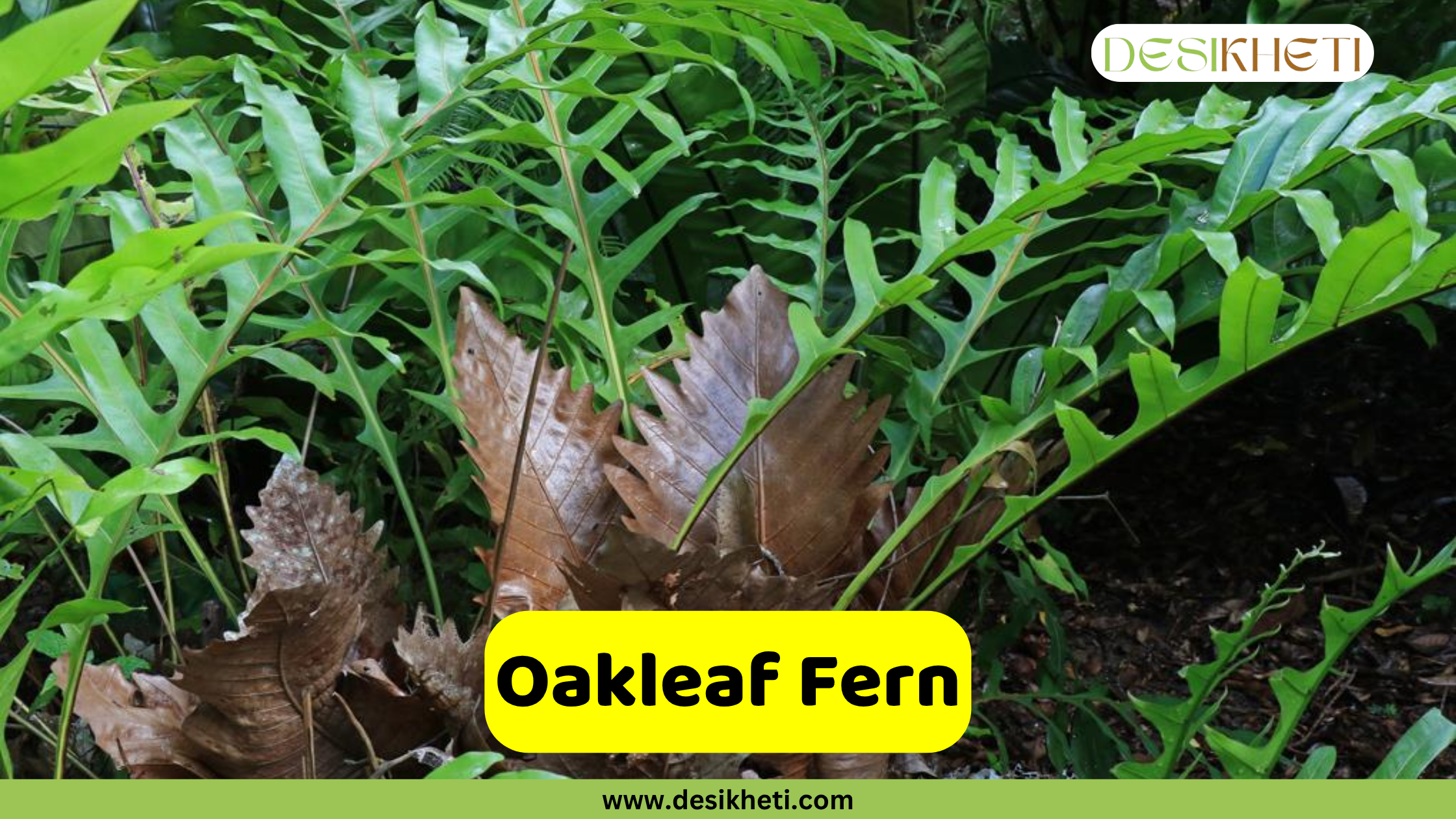
Scientific Name: Drynaria quercifolia
Oakleaf Fern is a unique epiphytic fern named for its oak leaf–shaped fertile fronds. It has two types of fronds: sterile, shield-like basal fronds that cling to tree trunks, and larger, deeply lobed fertile fronds that arch outwards.
Native to tropical Asia, it thrives in humid conditions with filtered light. It grows best when mounted on wood or tree bark and is often found in forests growing on large trees or rocks.
Uses and Benefits:
- Excellent for mounting on walls, driftwood, or tree trunks.
- Adds exotic texture to tropical gardens and vertical displays.
- Visually striking due to its contrasting frond types.
Cinnamon Fern
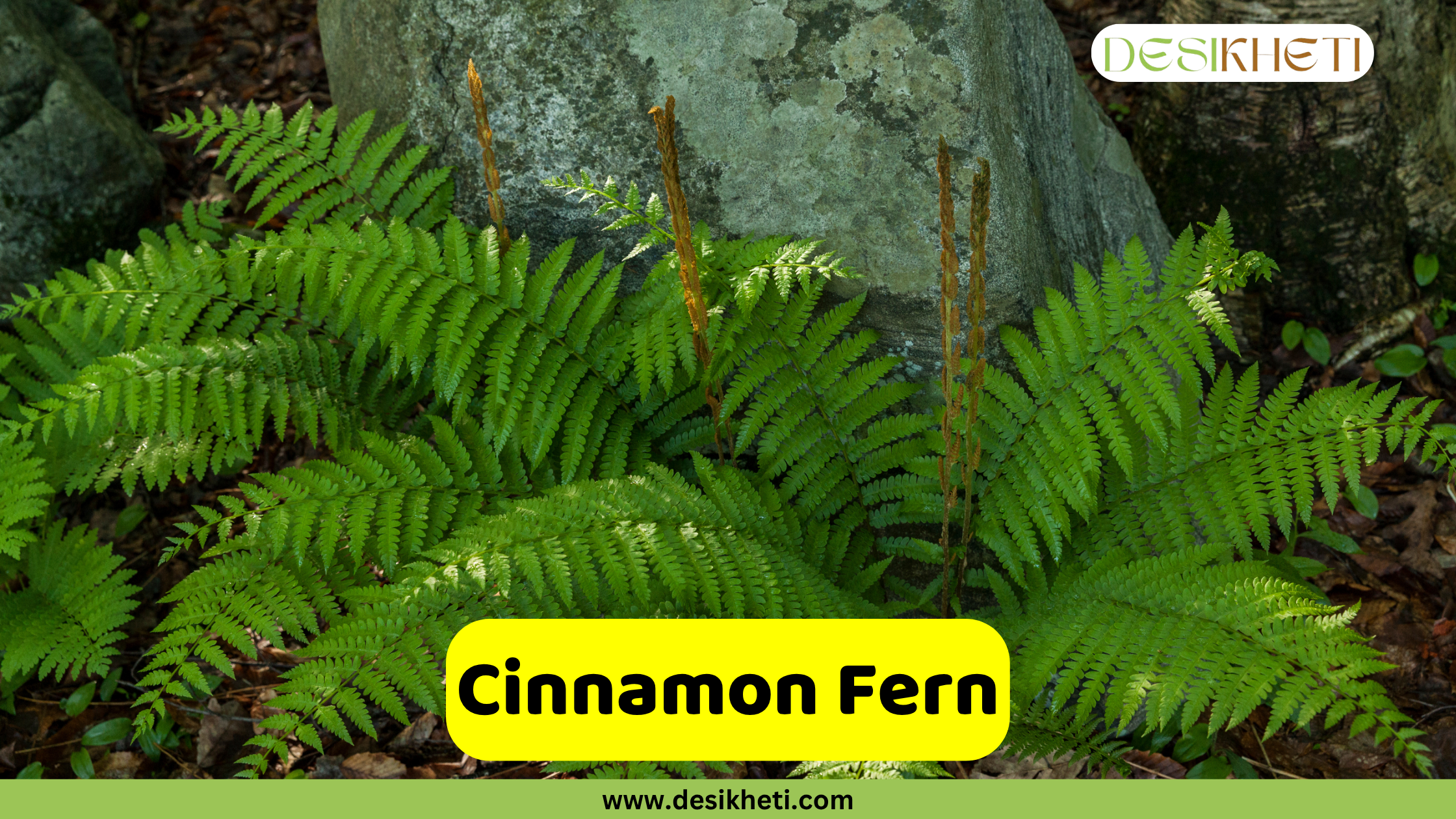
Scientific Name: Osmundastrum cinnamomeum (formerly Osmunda cinnamomea)
Cinnamon Fern has tall, arching, bright green fronds that can reach 3 to 5 feet in height. It produces distinctive cinnamon-colored fertile fronds in the center during spring, giving the plant its name. The sterile fronds form a symmetrical, vase-like shape with a soft, lush texture, creating a bold, tropical appearance.
This fern thrives in partial to full shade and tolerates filtered sunlight. It prefers moist to wet, acidic soil rich in organic matter and grows especially well in boggy areas or near water features. High humidity is ideal for healthy growth.
Uses and Benefits:
- Ideal for shaded garden beds, woodland gardens, or pond edges.
- Adds dramatic vertical height and tropical texture to landscapes.
- Helps stabilize soil in moist or boggy conditions.
Rabbit’s Foot Fern
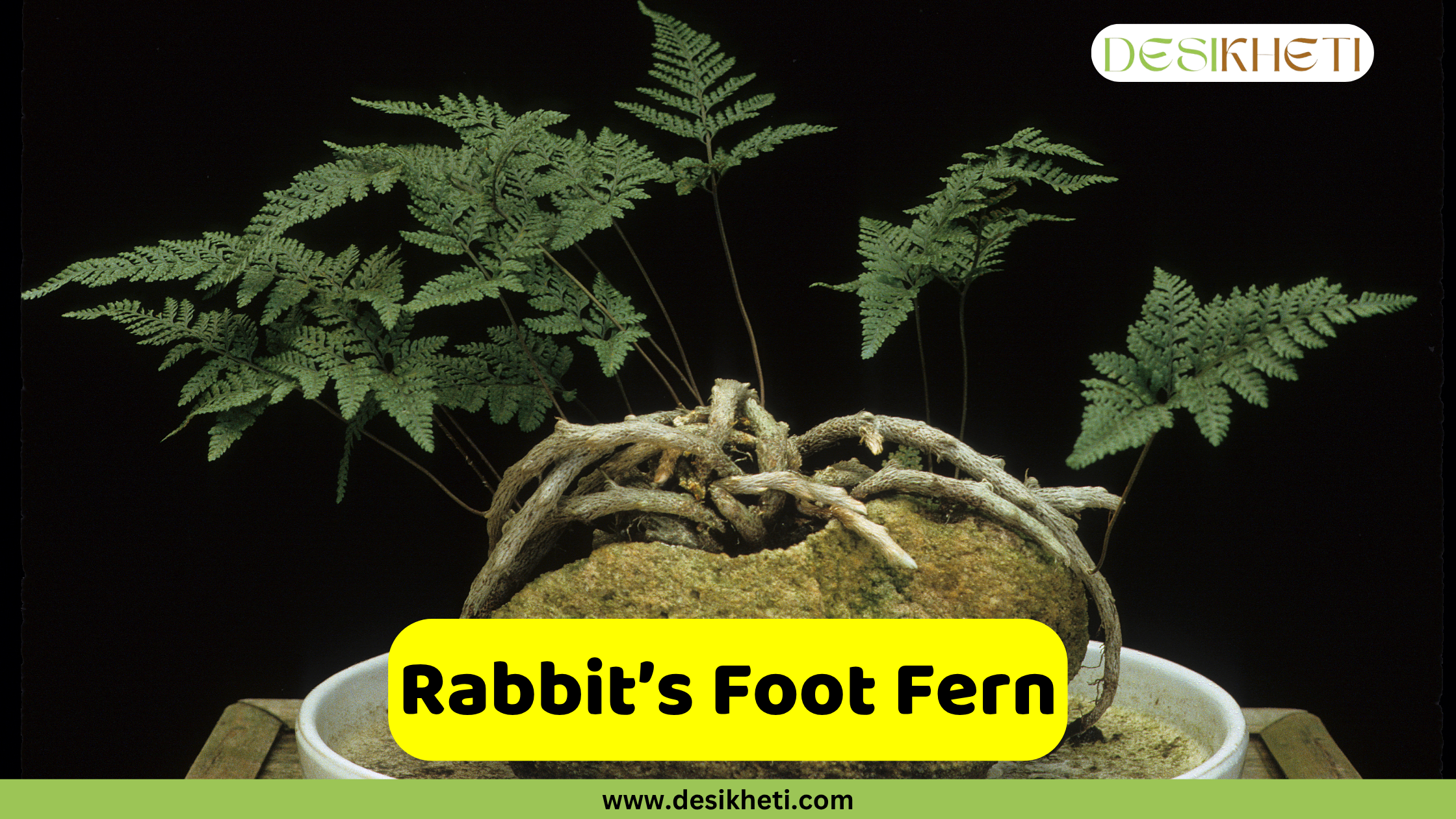
Scientific Name: Davallia fejeensis
Rabbit’s Foot Fern is noted for its fuzzy, brown rhizomes that creep over the edges of pots, resembling a rabbit’s foot. Its finely divided, lacy fronds grow 1 to 2 feet tall and have attractive, light to medium green foliage with a soft, elegant texture.
With its compact, epiphytic growth habit, it is ideal for hanging baskets or mounted displays. The plant prefers bright, indirect light and should be protected from direct sunlight.
Uses and Benefits:
- Excellent as a decorative indoor plant in hanging baskets or terrariums.
- Adds unique texture and visual interest with its fuzzy rhizomes.
- Suitable for mounting on wood or in baskets to showcase its trailing habit.
Tectaria Fern
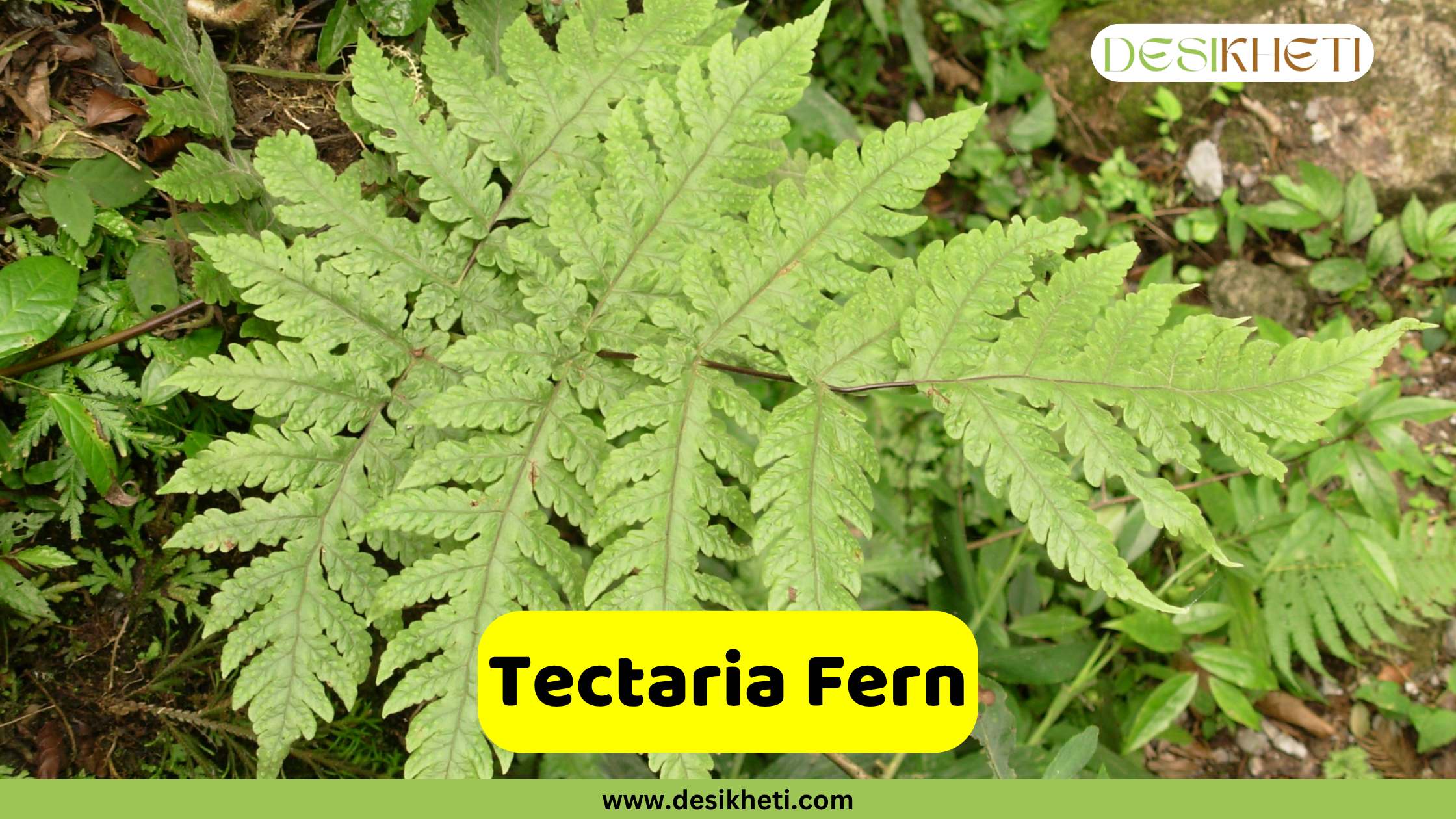
Scientific Name: Tectaria coadunata
Tectaria Fern is an ornamental species valued for its finely divided, glossy fronds and upright growth habit. Typically growing 1–2 feet tall, its fronds have a soft arch and rich green color that stands out in shaded garden beds.
This fern thrives in tropical and subtropical regions, preferring moist, humus-rich soil and partial to full shade. It is often used as a decorative plant in shaded landscapes, patios, and courtyard gardens.
Uses and Benefits:
- Popular ornamental fern for landscaping in shaded areas.
- Provides soft texture and dense coverage for undergrowth plantings.
- Great companion plant for flowering perennials in moist shade.
Toothed Maiden Fern
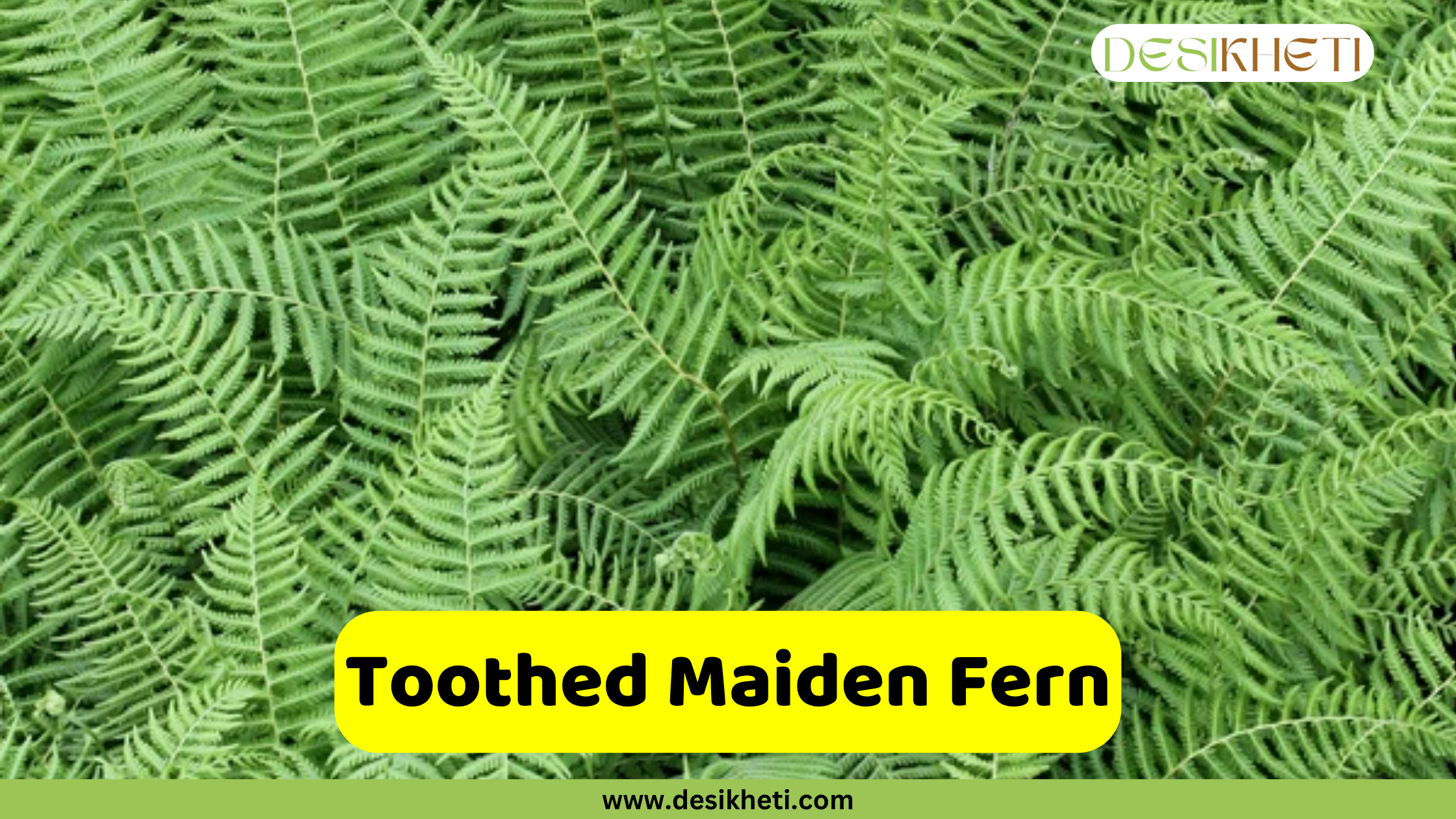
Scientific Name: Christella dentata
The Toothed Maiden Fern is a hardy, moisture-loving fern. It features long, upright fronds with distinctly toothed or serrated leaflets that give the plant its name.
The fronds can grow up to 2–3 feet tall and form a soft, bushy appearance, making it a lovely choice for shady garden corners or forest-like settings. This fern thrives in consistently moist, rich soil and grows best in filtered or indirect sunlight, avoiding direct sun exposure.
Uses and Benefits:
- Helps prevent soil erosion in low-light, damp areas.
- Easy to maintain and propagates well.
Staghorn Fern
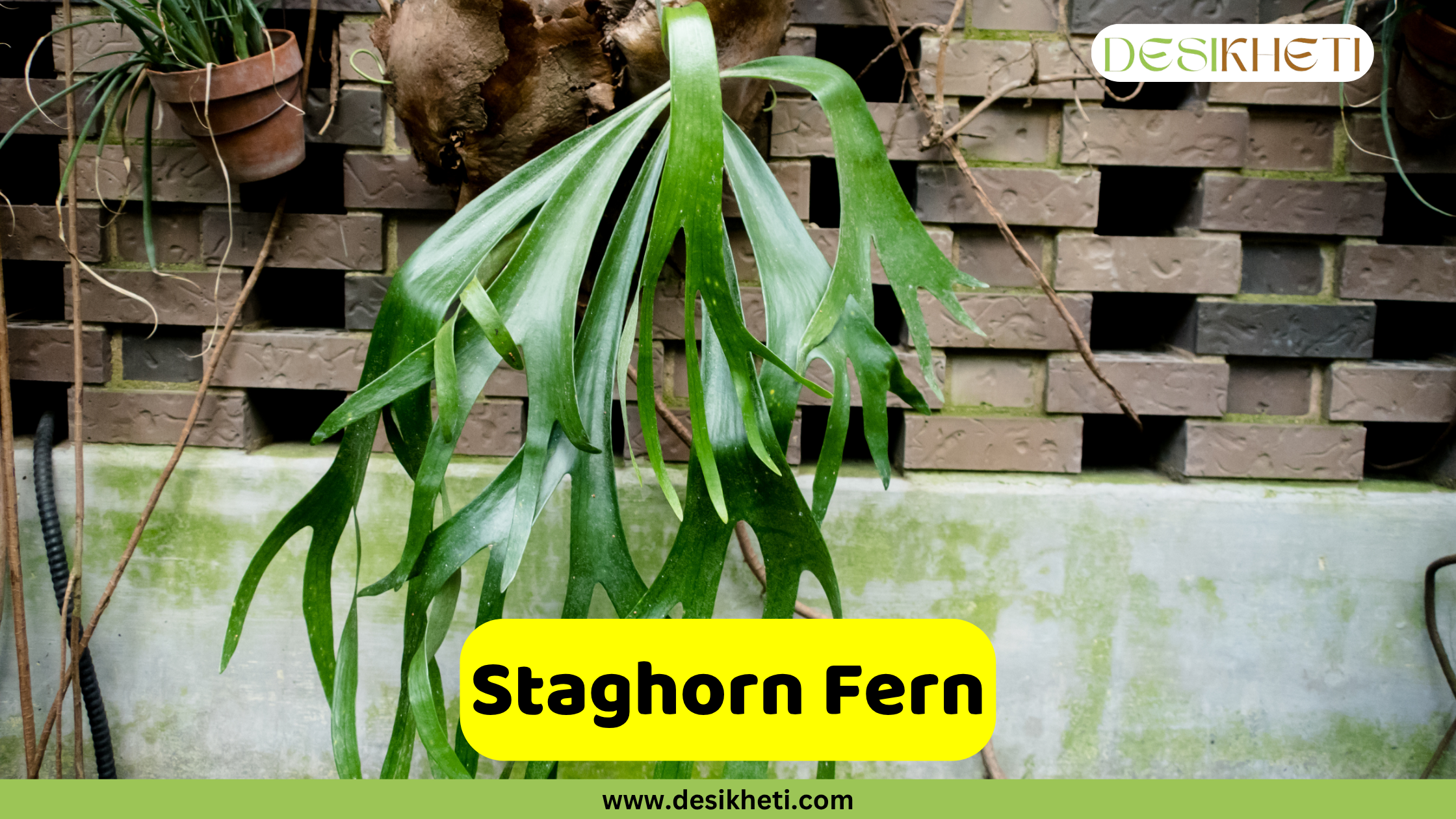
Scientific Name: Platycerium spp. (commonly Platycerium bifurcatum)
Staghorn Fern is an epiphytic fern distinguished by its large, antler-shaped fronds, which give it a striking, sculptural appearance. It has two types of fronds: flat, shield-like basal fronds that anchor the plant and upright, fertile, antler-shaped fronds.
It grows in a circular or cascading shape, reaching up to 3 feet across. This fern prefers bright, indirect light and can tolerate filtered sunlight.
Uses and Benefits:
- Popular for mounting on walls or tree trunks indoors and outdoors.
- Adds unique, artistic flair to interior spaces or shaded patios.
Kangaroo Paw Fern

Scientific Name: Microsorum diversifolium
Kangaroo Paw Fern has glossy, bright green fronds with irregular lobes that somewhat resemble a kangaroo’s paw. The fronds vary in shape and size and often arch gracefully. It grows in a clumping habit, usually reaching 1 to 2 feet tall and wide.
This fern spreads slowly through rhizomatous roots. It prefers bright, indirect light to partial shade and grows best in moderate humidity. Kangaroo Paw Fern tolerates some drought, making it relatively easy to maintain.
Uses and Benefits:
- Excellent houseplant for bathrooms, kitchens, or shaded rooms.
- Adds tropical greenery with a unique leaf shape.
Lemon Button Fern
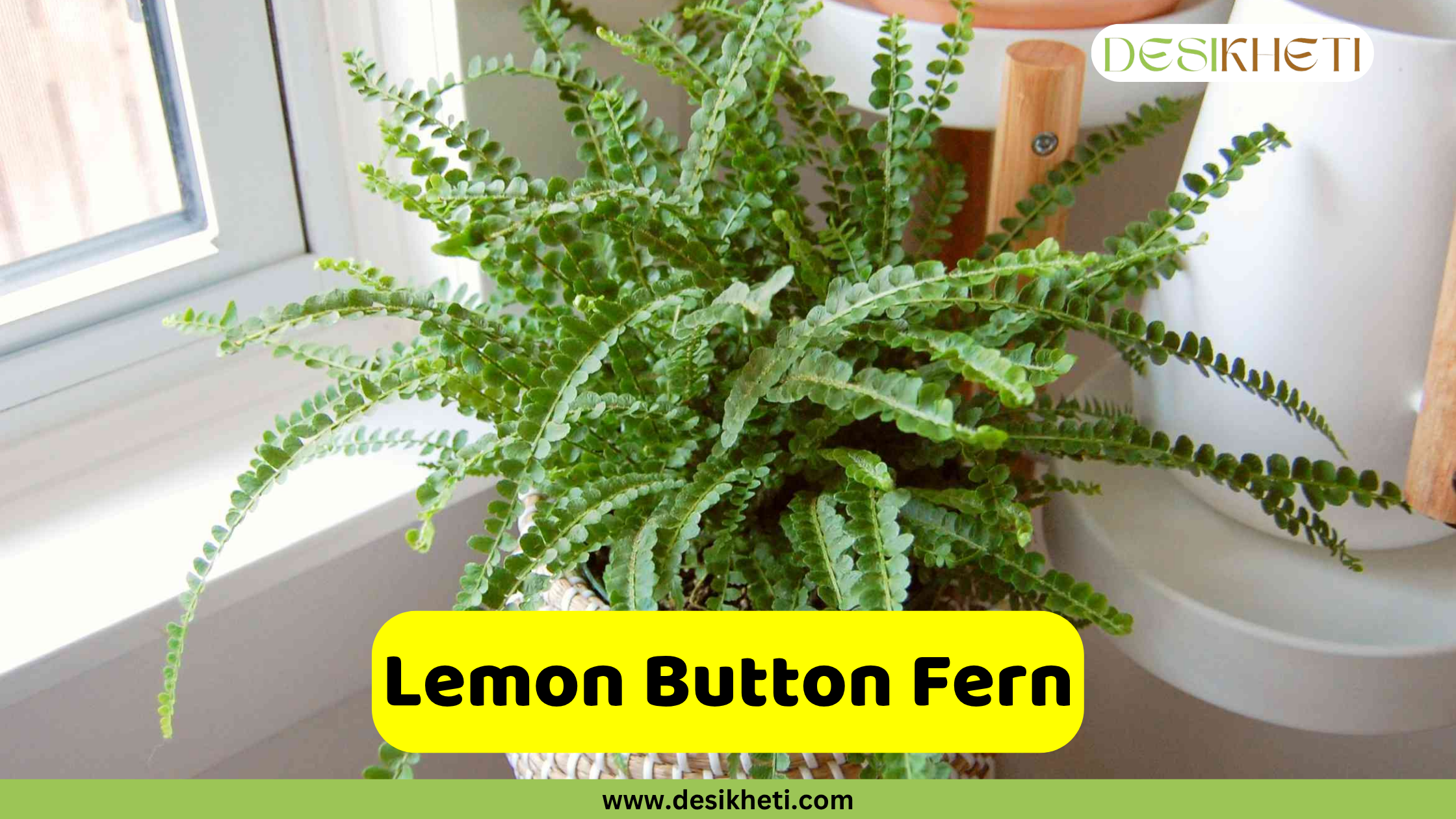
Scientific Name: Nephrolepis cordifolia ‘Duffii’
Lemon Button Fern is a compact, low-growing fern featuring small, round, button-like leaflets on arching fronds. The bright green foliage has a slight lemon scent when crushed. It typically grows up to 12 inches tall and wide, making it ideal for tabletops and terrariums.
The dense, bushy appearance and soft texture add charm to small indoor spaces. It prefers bright, indirect light or filtered sun. Medium to high humidity is preferred, along with moist, well-draining potting soil rich in organic matter.
Uses and Benefits:
- Perfect for small spaces, desktops, hanging pots, or terrariums.
- Adds fresh greenery and a subtle citrus scent indoors.
Other Popular Fern Varieties
- Hart’s Tongue Fern
- Blue Star Fern
- Lipfern
- Kettle Fern
- Christmas Fern
- Resurrection Fern
- Tassel Fern
- Ostrich Fern
- Japanese Painted Fern
Growing & Caring Tips for Ferns
- Watering: Keep the soil consistently moist but not soggy. Most ferns love humidity, so mist the leaves regularly or place a humidity tray nearby.
- Light: Most ferns prefer indirect or filtered light. Avoid direct sunlight, as it can scorch delicate fronds.
- Temperature: Maintain a stable temperature between 15°C and 25°C (59°F to 77°F). Protect ferns from drafts and sudden temperature changes.
- Soil: Use well-draining, rich, organic soil. Many ferns thrive in soil mixed with peat moss or leaf mold.
- Pruning: Remove yellow or dead fronds regularly to encourage new growth and maintain plant health.
- Fertilizing: Feed ferns monthly during the growing season with a balanced, diluted liquid fertilizer.
- Air Circulation: Ensure good air circulation but avoid placing ferns in windy or drafty areas.
- Repotting: Repot every 1–2 years or when the fern becomes root-bound to refresh the soil and provide room for growth.
Ferns are versatile and beautiful plants that can brighten up your home or garden while requiring relatively simple care. From large outdoor favorites like the Royal Fern to indoor stars like the Rabbit’s Foot Fern, these plants not only improve air quality but also bring a touch of tranquility and natural elegance to your surroundings.
By choosing the right fern suited to your light and humidity conditions, you can enjoy lush greenery all year round. Start adding these amazing ferns to your plant collection today and experience the calming beauty they bring to your space.
FAQs on Ferns and Their Types
1. Does the Bird’s Nest Fern have roots?
A. Yes, Bird’s Nest Ferns (Asplenium nidus) have a short root system that helps anchor them to trees or soil, depending on whether they are epiphytic or terrestrial.
2. Can ferns survive in full sun?
A. Most ferns prefer shade or partial sunlight. However, a few, like the Brake Fern or other sun-tolerant varieties, can adapt to filtered or morning sun, but not to harsh, direct afternoon sunlight.
3. What is the scientific name for the Downy Wood Fern?
A. The scientific name is Dryopteris carthusiana.
4. What family does Christella dentata belong to?
A. Christella dentata belongs to the Thelypteridaceae family.
5. What is another name for the Autumn Fern?
A. Autumn Fern is also known as Dryopteris erythrosora.
6. What is the purpose of a Staghorn Fern?
A. Staghorn Ferns (Platycerium spp.) are primarily grown as ornamental epiphytes. They are valued for their dramatic, antler-shaped fronds and their ability to purify air and enhance vertical garden aesthetics.
7. What are the benefits of Lemon Button Ferns?
A. Lemon Button Ferns (Nephrolepis cordifolia ‘Duffii’) are compact, non-toxic, great for air purification, and ideal for small indoor spaces due to their minimal care requirements.
8. What is the scientific name for the Swamp Fern?
A. The scientific name for Swamp Fern is Telmatoblechnum indicum (previously known as Blechnum indicum).
